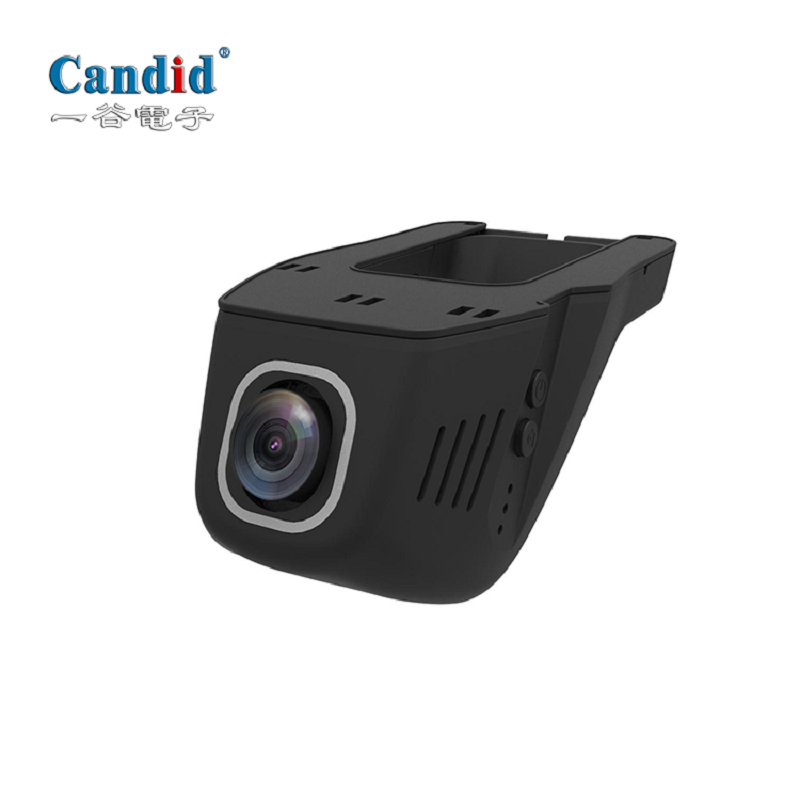
Working principle of millimeter wave radar | sharp millimeter wave radar
The working principle of millimeter wave radar is as follows:
According to Memes Consulting, although true driverless cars still need time, Advanced Driver Assistance Systems (ADAS), which actively protect car driving safety, are gradually maturing and popularizing. ADAS mainly uses various sensors installed on the car to collect data, sense the surrounding environment at any time during the driving process, collect data, identify, detect and track static and dynamic objects, and combine it with the map data of the navigator. The calculation and analysis of the system allow the driver to perceive the possible dangers in advance and effectively increase the comfort and safety of car driving. Currently, ADAS sensors that perceive the environment include cameras, ultrasonic sensors, and millimeter wave radars. Of course, self-driving cars also need on-board lidar. For a long time, lidar has been "favored" by mainstream autopilots because of its ability to realize 3D perception of the surrounding environment.
However, whether it is a lidar, a camera, or an ultrasonic sensor, all of them are easily affected by bad weather and cause performance degradation or even failure (bad weather is often the main reason for the high incidence of accidents), so there are "fatal" defects! At this time, millimeter-wave radar has the absolute advantage of being able to penetrate dust and fog, rain and snow, and not being affected by bad weather, and the only super ability to work "all-weather all-day" has become the indispensable core of automotive ADAS. One of the sensors! Next, let's have a "close contact" with millimeter wave radar to understand its concept and working principle.
Millimeter wave radar, as the name suggests, is a radar that works in the millimeter wave frequency band. Millimeter-Wave (Millimeter-Wave, abbreviation: MMW) refers to electromagnetic waves with a length of 1 to 10 mm, and the corresponding frequency range is 30 to 300 GHz. As shown in Figure 2, millimeter waves are located in the overlapping wavelength range of microwaves and far-infrared waves, so millimeter waves have the advantages of these two spectrums, as well as their own unique properties. The theory and technology of millimeter wave are the extension of microwave to high frequency and the development of light wave to low frequency.
According to the wave propagation theory, the higher the frequency, the shorter the wavelength, the higher the resolution, and the stronger the penetration ability, but the greater the loss in the propagation process, the shorter the transmission distance; relatively, the lower the frequency, the longer the wavelength. , The stronger the diffraction ability, the longer the transmission distance. Therefore, compared with microwave, millimeter wave has high resolution, good directivity, strong anti-interference ability and good detection performance. Compared with infrared, millimeter waves have less atmospheric attenuation, better penetrability to smoke and dust, and are less affected by weather. These characteristics determine the millimeter-wave radar has the ability to work around the clock.
Generally, water vapor and oxygen in the atmosphere can absorb electromagnetic waves. At present, most millimeter wave application research focuses on several "atmospheric window" frequencies and three "attenuation peak" frequencies. The so-called "atmospheric window" refers to those high transmittance bands where electromagnetic waves are less reflected, absorbed and scattered through the atmosphere. As shown in Figure 3, we can see that the "atmospheric window" where millimeter wave propagation suffers from less attenuation is mainly concentrated around the 35GHz, 45GHz, 94GHz, 140GHz, and 220GHz frequency bands. The attenuation peaks near 60GHz, 120GHz, and 180GHz frequency bands appear. Generally speaking, the "atmospheric window" frequency band is more suitable for point-to-point communication, and has been adopted by low-altitude air-to-surface missiles and ground-based radars, while the "attenuation peak" frequency band is preferentially selected by multi-channel diversity hidden networks and systems to meet network safety factors. Requirements.
sharp millimeter wave radar
According to Memes Consulting, although true driverless cars still need time, Advanced Driver Assistance Systems (ADAS), which actively protect car driving safety, are gradually maturing and popularizing. ADAS mainly uses various sensors installed on the car to collect data, sense the surrounding environment at any time during the driving process, collect data, identify, detect and track static and dynamic objects, and combine it with the map data of the navigator. The calculation and analysis of the system allow the driver to perceive the possible dangers in advance and effectively increase the comfort and safety of car driving. Currently, ADAS sensors that perceive the environment include cameras, ultrasonic sensors, and millimeter wave radars. Of course, self-driving cars also need on-board lidar. For a long time, lidar has been "favored" by mainstream autopilots because of its ability to realize 3D perception of the surrounding environment.
However, whether it is a lidar, a camera, or an ultrasonic sensor, all of them are easily affected by bad weather and cause performance degradation or even failure (bad weather is often the main reason for the high incidence of accidents), so there are "fatal" defects! At this time, millimeter-wave radar has the absolute advantage of being able to penetrate dust and fog, rain and snow, and not being affected by bad weather, and the only super ability to work "all-weather all-day" has become the indispensable core of automotive ADAS. One of the sensors! Next, let's have a "close contact" with millimeter wave radar to understand its concept and working principle.
Millimeter wave radar, as the name suggests, is a radar that works in the millimeter wave frequency band. Millimeter-Wave (Millimeter-Wave, abbreviation: MMW) refers to electromagnetic waves with a length of 1 to 10 mm, and the corresponding frequency range is 30 to 300 GHz. As shown in Figure 2, millimeter waves are located in the overlapping wavelength range of microwaves and far-infrared waves, so millimeter waves have the advantages of these two spectrums, as well as their own unique properties. The theory and technology of millimeter wave are the extension of microwave to high frequency and the development of light wave to low frequency.
According to the wave propagation theory, the higher the frequency, the shorter the wavelength, the higher the resolution, and the stronger the penetration ability, but the greater the loss in the propagation process, the shorter the transmission distance; relatively, the lower the frequency, the longer the wavelength. , The stronger the diffraction ability, the longer the transmission distance. Therefore, compared with microwave, millimeter wave has high resolution, good directivity, strong anti-interference ability and good detection performance. Compared with infrared, millimeter waves have less atmospheric attenuation, better penetrability to smoke and dust, and are less affected by weather. These characteristics determine the millimeter-wave radar has the ability to work around the clock.
Generally, water vapor and oxygen in the atmosphere can absorb electromagnetic waves. At present, most millimeter wave application research focuses on several "atmospheric window" frequencies and three "attenuation peak" frequencies. The so-called "atmospheric window" refers to those high transmittance bands where electromagnetic waves are less reflected, absorbed and scattered through the atmosphere. As shown in Figure 3, we can see that the "atmospheric window" where millimeter wave propagation suffers from less attenuation is mainly concentrated around the 35GHz, 45GHz, 94GHz, 140GHz, and 220GHz frequency bands. The attenuation peaks near 60GHz, 120GHz, and 180GHz frequency bands appear. Generally speaking, the "atmospheric window" frequency band is more suitable for point-to-point communication, and has been adopted by low-altitude air-to-surface missiles and ground-based radars, while the "attenuation peak" frequency band is preferentially selected by multi-channel diversity hidden networks and systems to meet network safety factors. Requirements.
sharp millimeter wave radar




